Animated blockbuster tops the film charts with a heroic reframing of the oft-maligned, three-eyed deity Yang Jian, Xu Fan reports.
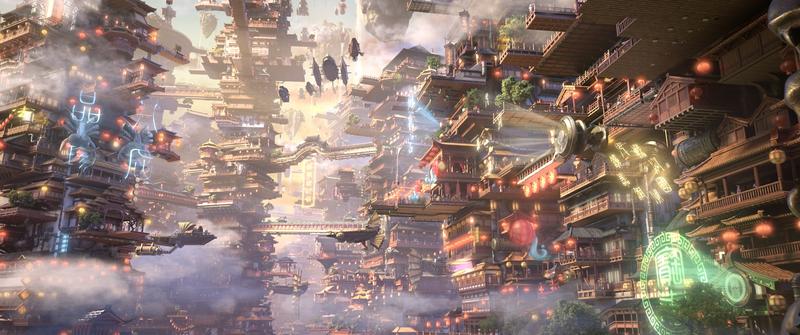 New Gods: Yang Jian, a visual feast bringing to life some of the most iconic heavenly places depicted in Chinese myths, has soared to become the latest summer blockbuster. (PHOTO PROVIDED TO CHINA DAILY)
New Gods: Yang Jian, a visual feast bringing to life some of the most iconic heavenly places depicted in Chinese myths, has soared to become the latest summer blockbuster. (PHOTO PROVIDED TO CHINA DAILY)
With a famous third "truth-seeing" eye on his forehead, Yang Jian-aka Erlang Shen-is a well-known figure from Chinese mythology. Over the centuries, the powerful celestial being has been reimagined many times, in works ranging from the 16th-century classic Journey to the West to the late-1990s award-winning animated blockbuster Lotus Lantern.
Now, Yang Jian, who always fights alongside his howling canine companion, Xiaotian, appears in his latest iteration in New Gods: Yang Jian, which was released in theaters across the Chinese mainland on Aug 19.
Showing on more than 33 percent of China's screens, the 127-minute epic is tailored to multiple formats, including Imax, and has so far grossed 300 million yuan ($43 million) to become the country's new single-day summer box office champion, according to the live tracker Beacon.
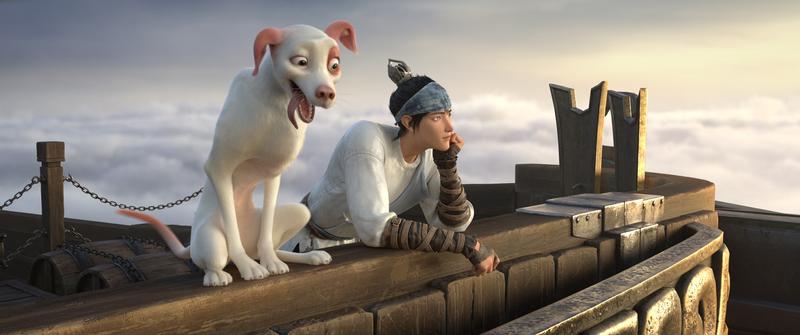 Yang Jian and his canine companion, Xiaotian. (PHOTO PROVIDED TO CHINA DAILY)
Yang Jian and his canine companion, Xiaotian. (PHOTO PROVIDED TO CHINA DAILY)
The movie marks the seventh feature-length title produced by Light Chaser Animation, which has focused on making animated movies inspired by Chinese mythology, legends and folklore. Some of its best-known works include Little Door Gods, the White Snake franchise and the first installment of the New Gods series Nezha Reborn.
Set in a fantastic interpretation of China's Jin Dynasty (265-420), heavenly gods and humankind coexist in the movie, which tells a brand-new story.
More than 1,500 years after falling from grace in an epic battle to restore order in heaven, Yang leads a rough life as a bounty hunter, but a "mission" entrusted to him by a beautiful woman leads him to uncover a horrifying plot.
The most recent hit animation to feature Yang is the 1999 blockbuster Lotus Lantern, the biggest-budget project ever produced by Shanghai Animation Film Studio, which could arguably be considered as China's answer to Disney.
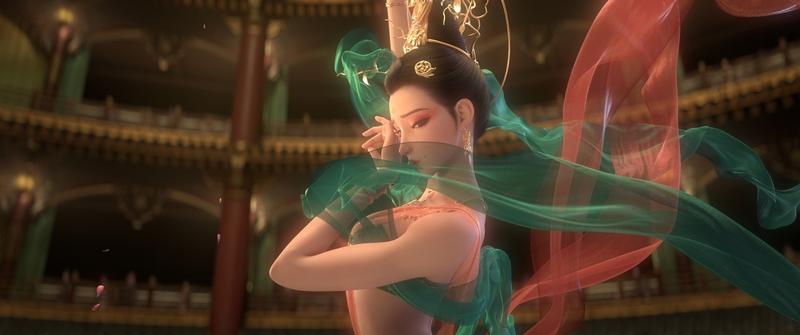 Wanluo, a mysterious celestial being who's a friend of Yang's mother. (PHOTO PROVIDED TO CHINA DAILY)
Wanluo, a mysterious celestial being who's a friend of Yang's mother. (PHOTO PROVIDED TO CHINA DAILY)
Quite different from the character design of Yang in the 1990s classic, which depicts the figure-who is voiced by famous actor Jiang Wen-as a ruthless, cold-blooded and mean god, the new film reframes Yang as more of a wandering swordsman who never puts aside the pursuit of safeguarding the peace of the world.
In most of the previous movies and TV series in which the character appears, Yang, usually depicted as a villain, destroys the marriage of his younger sister, also a celestial being, to a member of the literati. As a teenager, his nephew, Chenxiang, embarks on an arduous journey to fight Yang and rescue his mother, who is imprisoned in Huashan Mountain.
"When I was conducting research, I was surprised to find that Yang did a similar thing to Chenxiang when he was young," says Zhao Ji, the director, adding that he was curious about what changed Yang, believing this pivotal discovery would lay the foundation for the new movie.
According to folklore experts, the legend of Yang conjuring up divine power to split a mountain and rescue his trapped mother has evolved over centuries, through the Song (960-1279) and Ming dynasties (1368-1644). His sister's son Chenxiang, who also uses his magical power to split a mountain and save his mother, has seen his legend accumulating popularity from a Yuan Dynasty (1271-1368) play. The two tales are widely regarded as a metaphor to symbolize Chinese people's courage in resisting oppression and the unjust rule of the feudal dynasties.
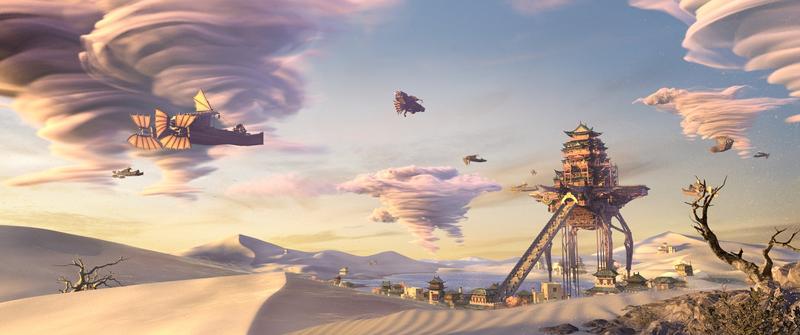 (PHOTO PROVIDED TO CHINA DAILY)
(PHOTO PROVIDED TO CHINA DAILY)
For Zhao and his fellow creators, their main challenge was to find a new way of retelling the tale that would make it more relatable to a modern audience.
"The two legends are both about a youngster trying to save his mother, so they have a shared core centering on the affection and love of family. We believed that was the thing which could open the door for our story," says Zhao.
Continuing Light Chaser studio's trademark style of blending traditional culture and modern punk fashion, the new movie has gathered around 300 animators to make hundreds of visually stunning scenes, exemplified by the heavenly architecture floating in the sky, a Flying Apsaras-style dance and a fight which takes place in a brush painting scroll featuring the tai chi symbol.
Zhao recalls that his team of creators traveled to places of interest to seek inspiration, including the Mogao Caves and Yueya (crescent-shaped) Spring in Dunhuang, Gansu province, as well as Huashan Mountain and museums in Shaanxi province.
"Many of us grew up with bedtime stories that told of these mythical islands such as Penglai and Yingzhou. So, when we started the project of Yang Jian, one of the most attractive things to me was having the opportunity to bring to life a fantastical world where these Chinese celestial beings live," says Zhao.
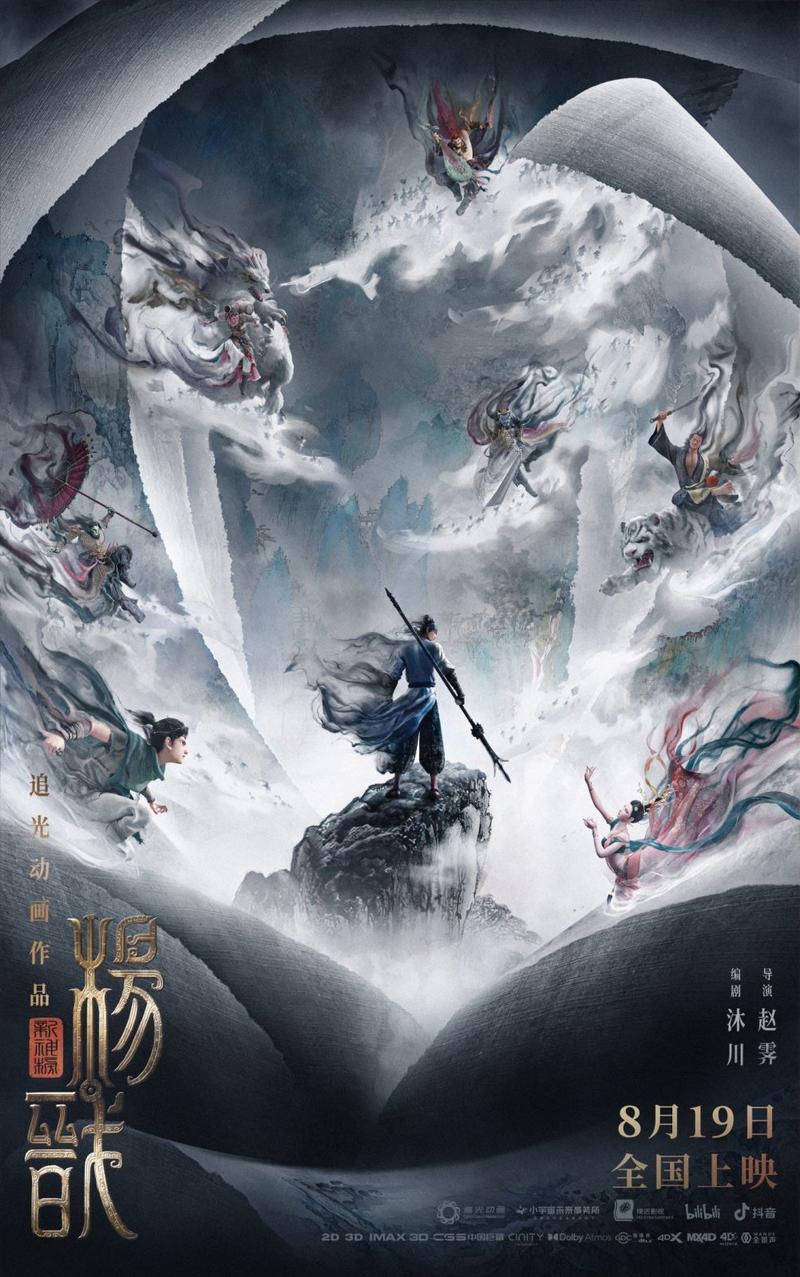 (PHOTO PROVIDED TO CHINA DAILY)
(PHOTO PROVIDED TO CHINA DAILY)
Aside from taking reference from the historical sites, the director recalls his team also conducted a lot of research to absorb the architectural aesthetics of numerous dynasties from the Wei (220-265) and Jin through to the Tang Dynasty (618-907), according to Zhao.
"We hope the movie will show the audience how beautiful and diversified China's ancient architecture was and that the love and passion of Chinese culture and history can be passed on to the next young generation," he adds.
Another highlight of the movie is the cast. It gathers together a group of voiceover celebrities, such as Yang Tianxiang, famous for voicing a Buddhist monk in the movie Legend of the Demon Cat, and Ji Guanlin, known for lending her voice to the protagonist in Empresses in the Palace.
Depicting it as an "impressive yet challenging" experience, Yang Tianxiang recalls that they performed the voiceovers before the film started shooting, so they had to use their imagination to picture the emotions and reactions of their characters.
Despite obtaining a current score of 7 points out of 10 on the review aggregator Douban, the movie has received some criticism. While most users hail its gorgeous scenery and visualization of the heavenly palaces and creatures, they say the plot is a bit plain and chastise the lack of character development-common complaints among viewers of Light Chaser's consistently visually stunning films.
Contact the writer at xufan@chinadaily.com.cn


